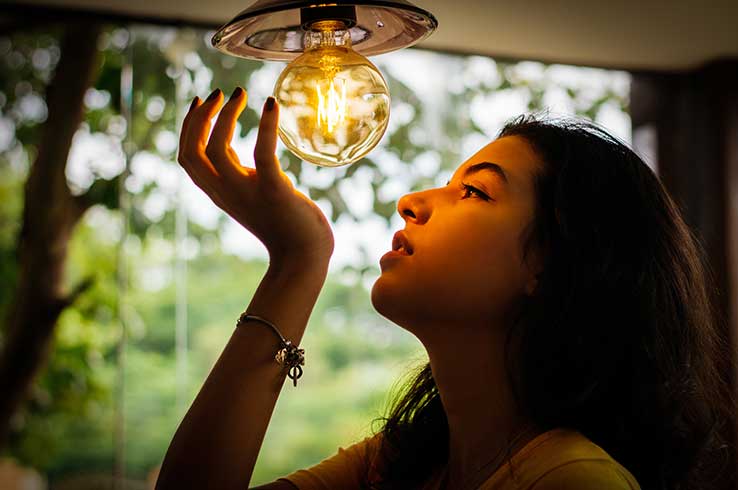Effective ways to increase energy efficiency in a home include upgrading insulation and windows, using energy-saving appliances, optimizing heating and cooling systems, and adopting smart home technology. By implementing these strategies, homeowners can reduce energy consumption, lower utility bills, and minimize environmental impact.
Additionally, small changes like using LED light bulbs, sealing air leaks, and properly maintaining HVAC systems can contribute to overall energy efficiency. These steps not only benefit the environment but also create a more comfortable living space and improve the resale value of the property. Start making these energy-efficient improvements to your home today to save money and reduce your carbon footprint.
1. Insulate Your Home Properly
Increasing energy efficiency in a home starts by insulating it properly. Install insulation in the walls, attic, and floors to retain heat and reduce energy loss. Additionally, seal air leaks around windows and doors to prevent drafts. Weather stripping and caulking are effective in sealing gaps and improving energy efficiency. By taking these steps, you can ensure that your home retains its temperature and reduces the need for excessive heating or cooling. This not only saves energy but also reduces utility bills and reduces the environmental impact associated with energy consumption. Improving energy efficiency in your home is a cost-effective and eco-friendly way to create a comfortable living space while reducing your carbon footprint.
2. Upgrade To Energy-Efficient Appliances
Upgrading to energy-efficient appliances is a great way to increase energy efficiency in your home. Opt for appliances with the ENERGY STAR label, as they are designed to consume less electricity and reduce your energy bills. An important aspect of improving energy efficiency is investing in a high-efficiency HVAC system. This system uses less energy to heat or cool your home, resulting in cost savings and reduced environmental impact. Another simple yet effective step is to replace your old light bulbs with LED or CFL options. These energy-efficient bulbs use significantly less electricity and last longer, helping you save money on your energy bills in the long run. By implementing these measures, you can boost your home’s energy efficiency and contribute to a greener, more sustainable future.
3. Optimize Heating And Cooling Systems
Optimizing heating and cooling systems is crucial for increasing energy efficiency in a home. Set the thermostat to a comfortable yet energy-saving temperature, which can help reduce energy consumption. Regularly cleaning or replacing air filters ensures that the system operates efficiently. Another effective way is to use programmable thermostats to automate temperature adjustments based on the time of day or occupancy. This helps optimize energy usage and reduces unnecessary heating or cooling when no one is at home or during nighttime. By implementing these simple measures, homeowners can significantly improve energy efficiency in their homes, resulting in lower energy bills and a more sustainable living environment.
Frequently Asked Questions :
How Can We Improve The Energy Efficiency Of Our Home?
To improve energy efficiency in your home, you can upgrade insulation, switch to LED bulbs, seal air leaks, and install a smart thermostat.
What Are Three Approaches to Enhance Energy Efficiency?
There are three effective ways to increase energy efficiency:
- Upgrade insulation: Improve insulation in your home or office to reduce energy loss and lower heating and cooling costs.
- Use energy-efficient appliances: Replace old appliances with newer models that have high energy-saving ratings to reduce electricity consumption.
- Install LED lighting: Switch to LED bulbs, which are highly energy-efficient and have a longer lifespan compared to traditional incandescent bulbs.
What Are 4 Things We Can Do To Be More Energy-Efficient?
To be more energy-efficient, you can:
- Use LED light bulbs: They’re more efficient and can save energy compared to traditional bulbs.
- Unplug electronics when not in use: This avoids standby energy consumption.
- Insulate your home: Proper insulation helps retain heat and cool air, reducing energy needs.
- Upgrade to energy-efficient appliances: Look for ENERGY STAR-certified products to save on energy consumption.
What Are Five Methods for Enhancing Energy Efficiency in Already Existing Buildings?
Here are five ways to improve energy efficiency in existing buildings:
- Install energy-efficient lighting, such as LED bulbs, to reduce electricity consumption.
- Insulate walls and roofs to prevent heat transfer and reduce the need for excessive heating or cooling.
- Upgrade old and inefficient appliances with energy-efficient models to lower electricity usage.
- Seal air leaks around windows and doors to prevent drafts and maintain a comfortable indoor temperature.
- Implement a smart thermostat system to optimize heating and cooling based on occupancy and time of day.
Conclusion
Increasing energy efficiency in a home is not only beneficial for the environment but also for our wallets. By implementing these effective strategies, we can significantly reduce our energy consumption and lower our utility bills. First, optimizing insulation can prevent heat loss or gain, thus reducing the need for excessive heating or cooling. Secondly, upgrading to energy-efficient appliances, such as Energy Star-rated models, can help save energy and reduce costs in the long run. Additionally, using natural light and installing energy-efficient lighting can minimize electricity usage. Employing smart home technology and utilizing programmable thermostats can further enhance energy efficiency. Lastly, practicing good habits like turning off lights when not in use and unplugging electronics can make a considerable impact. By adopting these methods and making these energy-saving adjustments, we can all contribute to a greener and more sustainable future. So, let’s take small steps today for a brighter and more efficient tomorrow.

